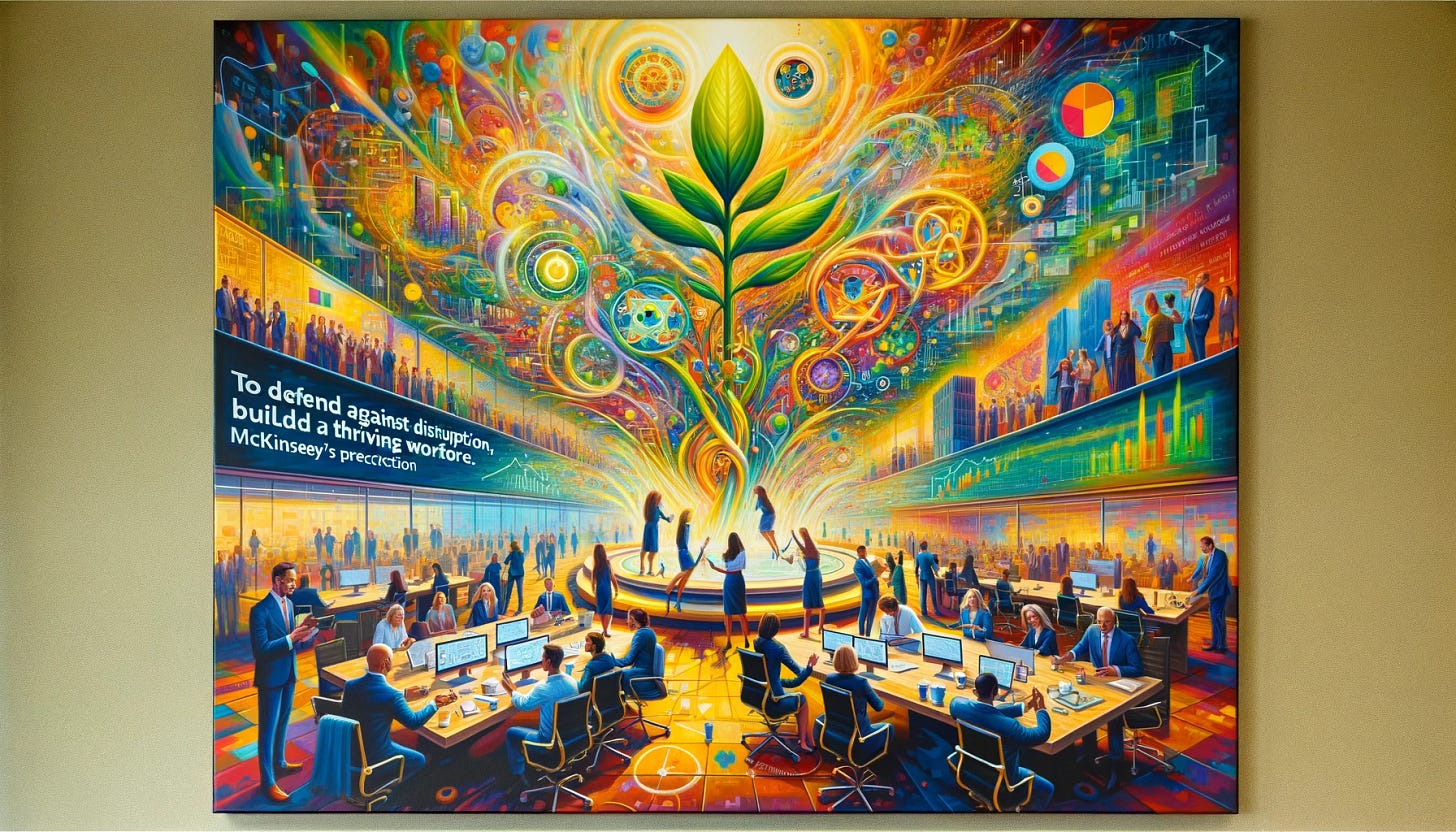Prevent disruption, build a thriving workforce: McKinsey's 5-Point Prescription
The key is to adopt a proactive, organization-wide strategy to leverage AI effectively, rather than taking a reactive approach.
| Article by McKinsey & Company
Introduction
As generative AI (gen AI) continues to reshape jobs, leaders have a unique opportunity to reimagine the nature of work, the workplace, and the role of the worker. Our article summarizes a comprehensive and scholarly essay by the McKinsey staff, exploring five strategic actions to cultivate a thriving workforce amid the ongoing disruptions caused by pandemics, geopolitical instability, and rapid technological advancements, especially in the filed of AI.
The Challenge of Nonstop Disruption
The past few years have been marked by continuous disruption, creating an environment where traditional business practices no longer suffice. Workers are increasingly disengaged and burned out, questioning their work's nature and purpose.
The Potential of Gen AI
While gen AI and other automation tools can boost productivity and address major global challenges, their improper management can exacerbate burnout. McKinsey research highlights that heavy users of gen AI are at a higher risk of burnout, emphasizing the need for meaningful work, flexibility, and well-being support.
Reimagining the Workforce
Gen AI's role extends beyond rote tasks, enabling employees to focus on higher-level cognitive and creative work. A thriving workforce requires a shift from viewing employees as mere cogs to elite artists or athletes needing time to recharge and recover.
Five Actions to Build a Thriving Workplace
Rewrite the Rules on Workforce Flexibility Companies should extend flexibility beyond remote work, considering options like a four-day workweek or core working days. Flexibility should accommodate individual rhythms and preferences to enhance engagement.
Rethink the Collaboration Model As work becomes more complex and dynamic, effective team dynamics are crucial. Teams should have clarity on the problem at hand, success metrics, and collaborative practices, tailored to individual and team preferences.
Emphasize Performance Coaching Continuous feedback and training, akin to coaching athletes and artists, are essential. Organizations should invest in coaching for all performance levels, especially high performers, to foster growth and future leadership.
Create Opportunities to Practice and Train Employees should have designated times for practice and performance, with safe spaces to experiment and innovate. Training should be rigorous, focusing on skill-building and achieving explicit goals.
Kick the Meeting Habit and Build in Time for Recovery Reducing unnecessary meetings and incorporating microbreaks can boost productivity and creativity. Organizations should recognize the importance of recovery time to align work with health and well-being.
Moving Forward
Organizations must shift from traditional productivity measures to recognizing impact and outcomes. The evolution driven by the pandemic and generative AI offers a transformative potential for both companies and employees, fostering growth and thriving environments. By taking a proactive approach, organizations can prevent the risk of their workforce becoming redundant or their business being overtaken by competitors who effectively leverage AI. This is a golden opportunity to turn threats into opportunities and transform weaknesses into strengths, ensuring long-term success and resilience.
About the Authors
The article was authored by Jacqueline Brassey, Aaron De Smet, Emily Field, Taylor Lauricella, and Brooke Weddle, and edited by Barbara Tierney. They are affiliated with various McKinsey offices.
For more information, visit McKinsey & Company's website.



